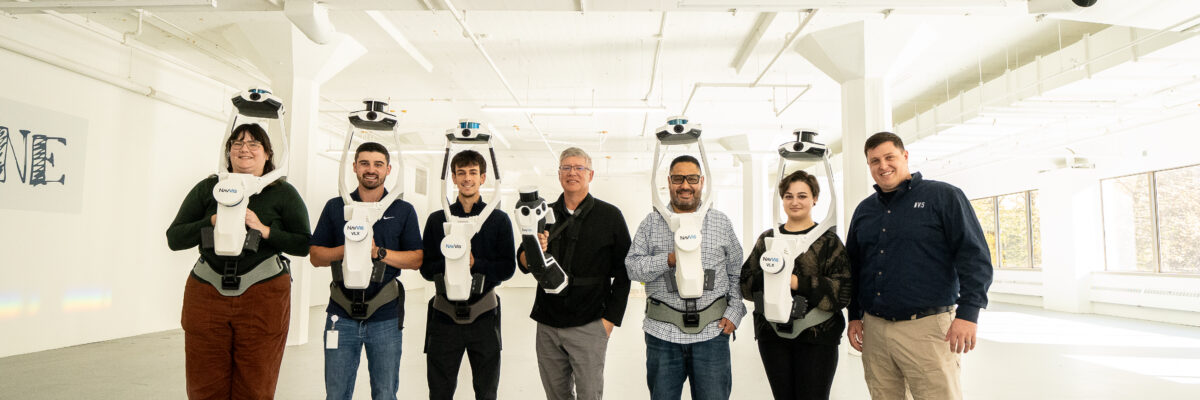In October 2024, NV5 embarked on an ambitious project to roll out advanced Radio-Frequency Identification (RFID) and computer vision technology, a form of artificial intelligence that enables computers to derive information from their physical surroundings and make recommendations based on that information, across over 1,100 retail locations in the United States. The initiative began with a simple inquiry from a company specializing in these technologies and quickly expanded into a nationwide endeavor. David Black, Vice President of Digital Buildings, and Brandon Pasela, Senior Project Manager and Project Logistics Lead, shared insights into how NV5 is managing the logistics, scanning processes, and internal collaboration to ensure client satisfaction and the seamless execution of this program. Their unified approach has been pivotal in delivering consistent results and adapting to unexpected challenges, setting a new standard for large-scale retail technology implementations.
Interviewer: NV5 is currently working on a project involving over 1,100 retail locations across the U.S. Can you walk us through how this opportunity came about?
David Black (Vice President – Digital Buildings and Project Technical Lead, NV5): It started with a simple inquiry through our website. Initially, the scope was small, just a handful of stores. But once we began building the relationship, the project quickly expanded to over 1,100 locations.
Interviewer: That’s a large scale-up. How did NV5 manage the logistics of such a big rollout?
Brandon Pasela (Senior Project Manager and Project Logistics Lead, NV5): That’s where our project management team came in. We initially planned to move east to west, but as the project evolved, we had to quickly adapt and reoptimize our approach. Using route optimization tools, we created efficient scanning schedules and coordinated technician assignments, travel routes, and client approvals weeks in advance. Our goal is to keep the process seamless for the client, and we’ve been successful in doing so.
Interviewer: What’s the scanning process like?
Pasela: Each of our technicians visits a store for about 90 minutes, during regular business hours, thanks to our advanced wearable scanning equipment. This tech allows us to blur out people and sensitive information automatically, which is a big advantage over traditional tripod-based scanners.
Black: Once the scan is complete, our team processes the data into CAD floor plans and high-resolution point cloud images. These deliverables allow the client to design and implement their systems remotely, no need for them to visit the site. This technology enables the client to customize and track inventory layouts, with designs tailored to the unique footprint of each retail location. This technology also allows the client to develop seasonal promotions and inventory at scale for thousands of locations with customized designs for the unique footprint of each retail location.
Interviewer: What’s the end goal for the client?
Black: Primarily inventory management. The client’s system uses a combination of RFID and computer vision to track merchandise in real time—whether it’s on the sales floor, in the stockroom, or even if it exits the store without being purchased. What makes it especially powerful is the integration of geofencing and location intelligence. Their platform can detect movement patterns, optimize store layouts, and even trigger automated workflows based on item location. It’s a game-changer for retail operations, enabling smarter inventory decisions and reducing shrinkage.
Interviewer: What does success look like for this project?
Pasela: From our perspective, success means staying on schedule, hitting every milestone, and delivering exactly what the client needs, on time, every time. So far, we’ve scanned and delivered over 850 stores with 100% accuracy and zero missed deadlines. Every deliverable has been approved, and we’re actively closing out each site within two weeks of the scan.
Black: It’s a logistics-heavy project. We can scale up our technical team as needed, but if the scheduling and coordination aren’t locked in early, everything else falls apart. Thanks to our project management team, we haven’t missed a single scheduled store scan or deliverable.
Interviewer: That’s impressive. Has NV5 had to scale up to meet the demands?
Black: Absolutely. We’ve grown our internal team, adding seven full-time staff on the CAD and rework side and hiring four new scanning technicians specifically for this project. We now have seven trained scanning techs on standby, ready to deploy nationwide.
Pasela: And we’ve done more than just meet expectations, we’ve adapted to unexpected changes. When the client shifted from a regional to a nationwide rollout, we quickly reoptimized our plans without increasing costs or delays. That flexibility and responsiveness are a big part of why this project has been so successful.
Black: It’s also worth noting that we’ve helped develop new processes, like in-store validation scanning using RFID-tagged panels. That kind of innovation shows how NV5 can enhance the client’s capabilities.
Interviewer: Have there been any unexpected challenges?
Pasela: Definitely. The original plan was to move east to west, but the client reprioritized about 200 stores nationwide. We had to pivot quickly and reoptimize everything without increasing costs. That flexibility and responsiveness are what set us apart.
Interviewer: What lessons has NV5 learned from this project?
Black: Having a dedicated program management team is essential for large-scale, fast-paced projects. It allows our technical teams to stay focused and ensures the client always has a clear line of communication.
Pasela: And it’s scalable. We’re already talking with the client about expanding globally. They see the value in how we work together.
Quote from the Client:
“Partnering with NV5 allowed us to deploy our technology faster and with greater precision than ever before. Their skilled PM team handled the complexity, from scheduling to survey execution, so our engineers could focus on delivering results. The high-quality, detailed 3D Scan-to-BIM data they provided was instrumental in helping us execute at speed and scale.”

